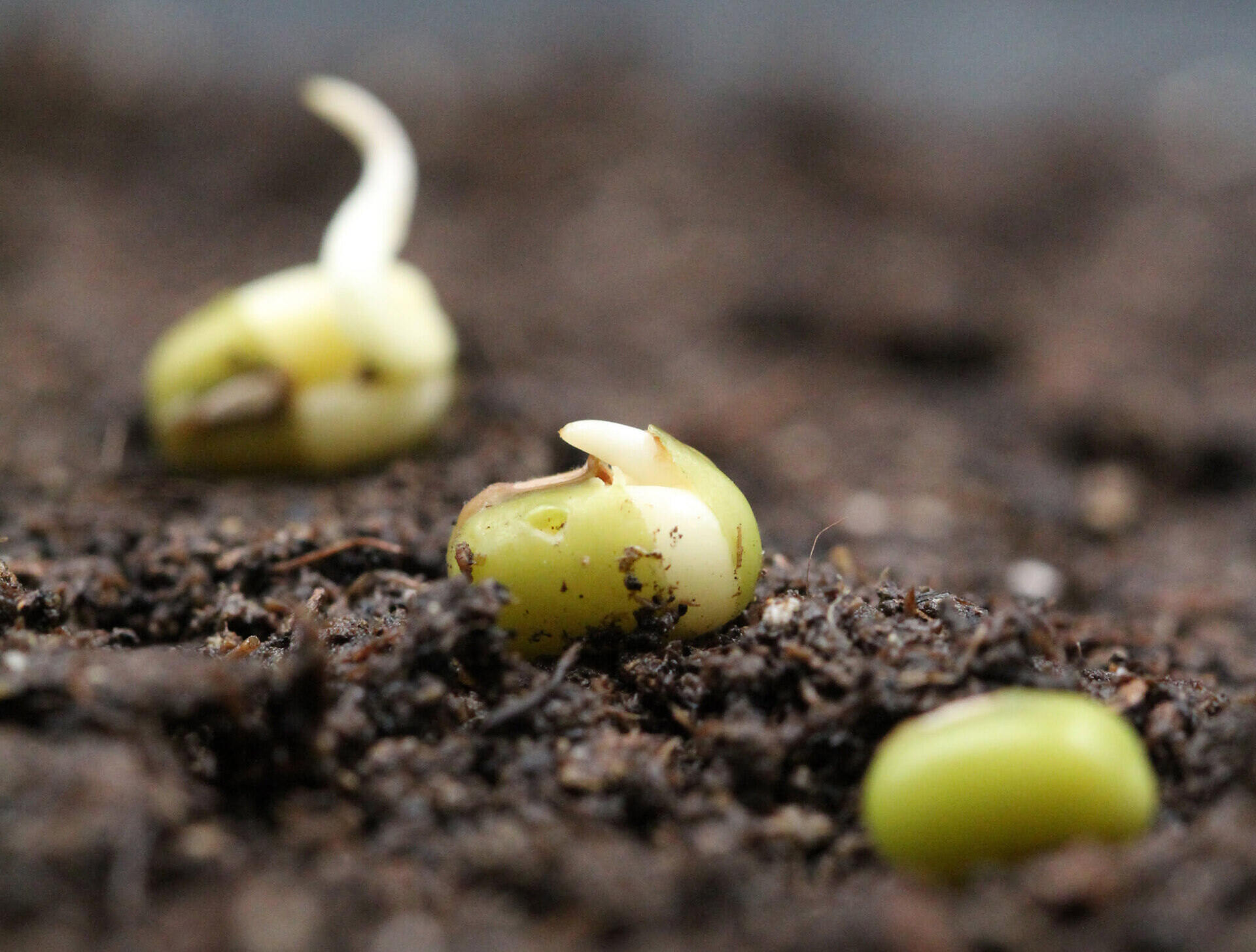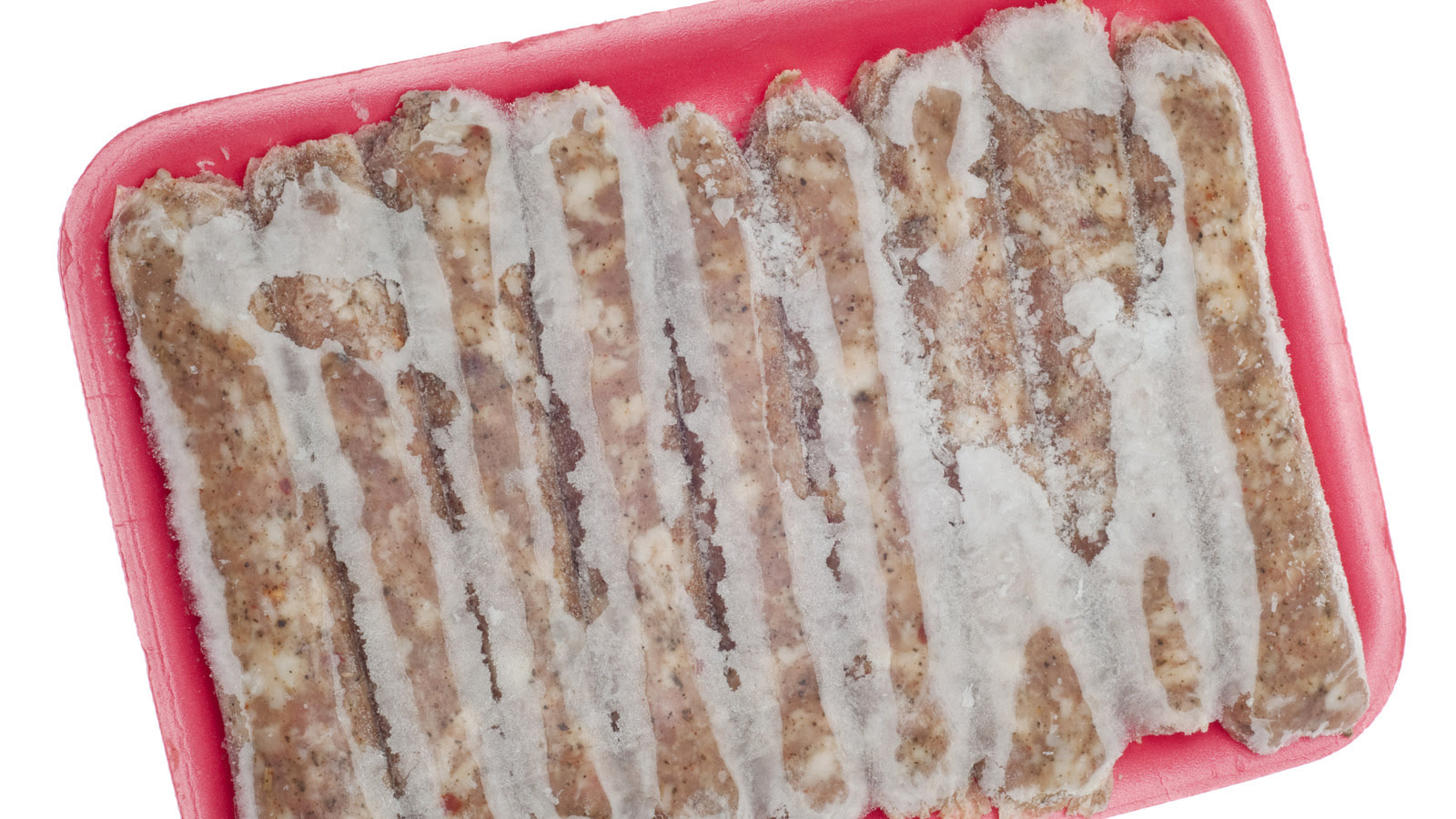Home>Gardening & Outdoor>Landscaping Ideas>What Does Sweetgrass Do


Landscaping Ideas
What Does Sweetgrass Do
Published: February 2, 2024
Discover the transformative power of sweetgrass in landscaping ideas. Learn how to incorporate sweetgrass for a beautiful and fragrant outdoor space.
(Many of the links in this article redirect to a specific reviewed product. Your purchase of these products through affiliate links helps to generate commission for Storables.com, at no extra cost. Learn more)
Introduction
Sweetgrass, scientifically known as Hierochloe odorata, is a fragrant perennial plant that holds deep cultural, spiritual, and medicinal significance. This aromatic herb, often found in North America and Europe, has been cherished for centuries for its captivating scent and versatile applications. From traditional ceremonial practices to natural healing remedies, sweetgrass has woven itself into the fabric of various cultures, leaving an indelible mark on the landscapes it inhabits.
As we delve into the multifaceted world of sweetgrass, we will uncover its rich history, traditional uses, medicinal properties, and spiritual significance. Additionally, we will explore the art of harvesting and utilizing sweetgrass, shedding light on the conservation efforts aimed at preserving this precious botanical treasure.
Join us on a journey through the enchanting realm of sweetgrass, where its allure and mystique continue to captivate and inspire generations across the globe.
Key Takeaways:
- Sweetgrass has been cherished for centuries for its captivating scent and versatile applications in ceremonial practices, artisanal crafts, and natural healing remedies, reflecting its enduring cultural and historical significance.
- Conservation and sustainable management of sweetgrass are crucial to preserve its natural habitats and cultural traditions. Responsible harvesting and cultivation efforts ensure the continued abundance of this cherished botanical treasure for future generations.
Read more: How To Make Sweetgrass Baskets
History of Sweetgrass
Sweetgrass has a storied history that intertwines with diverse cultures and spans centuries. This aromatic herb holds a revered place in the traditions of Indigenous peoples, particularly in North America, where it has been cherished for its multifaceted significance.
The use of sweetgrass can be traced back to ancient times, where it was revered by Indigenous communities for its sacred properties. Its fragrant blades were intricately woven into baskets, mats, and other crafts, symbolizing unity and the interconnectedness of all living beings. The sweet, vanilla-like scent of the burning sweetgrass was believed to purify the air and ward off negative energies during spiritual ceremonies and rituals.
In addition to its ceremonial importance, sweetgrass played a vital role in traditional healing practices. Indigenous healers utilized the herb for its purported medicinal properties, harnessing its essence to alleviate various ailments and promote overall well-being.
The historical significance of sweetgrass extends beyond North America, as it also holds a place in European folklore and traditions. In Scandinavia, sweetgrass, known as "holy grass," was used in religious ceremonies and believed to possess protective qualities. Its presence in European folklore underscores the widespread reverence for this aromatic herb across different cultures and geographical regions.
Over time, the cultural and historical significance of sweetgrass has continued to endure, transcending geographical boundaries and persisting as a symbol of spirituality, healing, and unity. Its legacy is deeply intertwined with the traditions and beliefs of Indigenous communities, where the art of harvesting and utilizing sweetgrass has been passed down through generations, ensuring its preservation and perpetuation.
As we reflect on the history of sweetgrass, we are reminded of its profound impact on cultural practices and its enduring legacy as a revered botanical treasure. The journey of sweetgrass through time serves as a testament to its resilience and the enduring bond it shares with the communities that have safeguarded its traditions for generations.
Traditional Uses of Sweetgrass
Sweetgrass, with its enchanting aroma and versatile properties, has been revered for its traditional uses across various cultures and communities. The significance of this aromatic herb transcends geographical boundaries, weaving itself into the fabric of ceremonial practices, artisanal crafts, and natural healing remedies.
Ceremonial and Spiritual Practices
In Indigenous cultures, sweetgrass holds profound spiritual significance and is often used in sacred ceremonies and rituals. The fragrant blades of sweetgrass are meticulously braided and burned as part of purification rituals, symbolizing the presence of positive energies and the dispelling of negativity. The smoke from burning sweetgrass is believed to cleanse the environment, creating a sacred space for prayer, meditation, and communal gatherings. Its sweet, vanilla-like scent is considered a form of offering, inviting positive energies and spiritual blessings.
Artisanal Crafts
The supple and fragrant nature of sweetgrass makes it a prized material for artisanal crafts. Indigenous artisans intricately weave sweetgrass into baskets, mats, and other decorative items, showcasing the cultural significance of this aromatic herb. These handcrafted pieces not only serve practical purposes but also symbolize unity, interconnectedness, and the preservation of traditional craftsmanship. The art of weaving sweetgrass into intricate patterns and designs reflects the deep-rooted traditions and artistic expressions of Indigenous communities.
Read more: What Does Landscaping Do
Natural Healing Remedies
Beyond its ceremonial and artisanal uses, sweetgrass is also valued for its purported medicinal properties. Indigenous healers have long utilized sweetgrass in traditional healing practices, harnessing its essence to address various ailments and promote overall well-being. The aromatic smoke from burning sweetgrass is believed to have cleansing and soothing effects, contributing to a sense of harmony and balance. Additionally, sweetgrass has been used in teas and topical preparations, with its aromatic compounds thought to offer therapeutic benefits for respiratory health and relaxation.
The traditional uses of sweetgrass underscore its multifaceted significance as a botanical treasure deeply intertwined with cultural traditions, spirituality, and natural healing practices. Its enduring presence in ceremonial rituals, artisanal crafts, and traditional medicine reflects the profound impact of sweetgrass on the cultural tapestry of diverse communities, preserving its legacy for generations to come.
Medicinal Properties of Sweetgrass
Sweetgrass, revered for its aromatic allure and cultural significance, is also celebrated for its potential medicinal properties. While scientific research on the medicinal benefits of sweetgrass is ongoing, traditional wisdom and anecdotal evidence have long highlighted its therapeutic potential in natural healing practices.
The aromatic compounds present in sweetgrass are believed to offer a range of potential health benefits. When burned, the fragrant smoke is thought to have calming and purifying effects, contributing to a sense of relaxation and mental well-being. In traditional medicine, the inhalation of sweetgrass smoke has been associated with promoting emotional balance and reducing stress, providing a soothing environment for spiritual and healing ceremonies.
Furthermore, sweetgrass has been used in the preparation of teas and topical applications, with its aromatic essence believed to possess respiratory-soothing properties. The gentle, sweet scent of sweetgrass is often associated with feelings of tranquility and harmony, making it a popular choice for promoting relaxation and alleviating tension.
In addition to its aromatic qualities, sweetgrass contains compounds that may contribute to its potential medicinal value. These compounds are thought to have antimicrobial and anti-inflammatory properties, which could support the body's natural healing processes. While further scientific exploration is needed to validate these properties, the traditional use of sweetgrass in addressing respiratory discomfort and promoting emotional well-being underscores its enduring role in natural healing practices.
The medicinal properties of sweetgrass, deeply rooted in traditional wisdom and cultural heritage, continue to intrigue researchers and health enthusiasts alike. As scientific inquiry delves deeper into the therapeutic potential of sweetgrass, its legacy as a botanical treasure with multifaceted significance remains an enduring source of fascination and exploration.
The aromatic allure and potential health benefits of sweetgrass serve as a testament to the intricate relationship between nature, culture, and holistic well-being, offering a glimpse into the profound wisdom encapsulated within this revered botanical treasure.
Spiritual and Cultural Significance of Sweetgrass
Sweetgrass holds profound spiritual and cultural significance, deeply woven into the traditions and beliefs of Indigenous communities and beyond. Revered for its aromatic allure and symbolic resonance, sweetgrass plays a pivotal role in ceremonial practices, artistic expressions, and the preservation of cultural heritage.
In Indigenous cultures, sweetgrass is regarded as a sacred plant, often referred to as the "hair of Mother Earth." Its fragrant blades are meticulously braided and burned during spiritual ceremonies, symbolizing the presence of positive energies and the dispelling of negativity. The smoke from burning sweetgrass is believed to cleanse the environment, creating a sacred space for prayer, meditation, and communal gatherings. This act of burning sweetgrass is considered a form of offering, inviting positive energies and spiritual blessings into the ceremonial space.
The art of weaving sweetgrass into intricate patterns and designs is a testament to its cultural significance. Indigenous artisans skillfully craft sweetgrass into baskets, mats, and other decorative items, symbolizing unity, interconnectedness, and the preservation of traditional craftsmanship. These handcrafted pieces not only serve practical purposes but also embody the cultural heritage and artistic expressions of Indigenous communities, passing down ancestral knowledge and values through generations.
Beyond its ceremonial and artisanal uses, sweetgrass embodies a profound connection to the natural world and the spiritual realm. Its sweet, vanilla-like scent evokes a sense of tranquility and harmony, creating an atmosphere conducive to spiritual reflection and healing. The presence of sweetgrass in traditional healing practices underscores its holistic significance, offering a bridge between the physical, emotional, and spiritual dimensions of well-being.
The spiritual and cultural significance of sweetgrass transcends geographical boundaries, resonating with diverse communities and individuals who cherish its timeless wisdom and symbolic resonance. Its enduring legacy as a botanical treasure reflects the enduring bond between nature, culture, and the human spirit, perpetuating a profound reverence for the interconnectedness of all living beings.
As we reflect on the spiritual and cultural significance of sweetgrass, we are reminded of its enduring legacy as a revered botanical treasure, enriching the tapestry of human experience with its aromatic allure and timeless wisdom.
How to Harvest and Use Sweetgrass
Harvesting and utilizing sweetgrass is an art deeply rooted in tradition and respect for the natural world. The process begins with identifying mature sweetgrass patches in their natural habitat, often found in moist meadows, along stream banks, or in marshy areas. It is essential to approach the harvesting process with mindfulness and sustainability in mind, ensuring that the delicate balance of the ecosystem is preserved.
When harvesting sweetgrass, it is crucial to select mature plants with long, fragrant blades. Careful consideration is given to the time of harvest, typically during the summer months when the sweetgrass is at its peak vitality. Using a sharp knife or scissors, the sweetgrass is carefully cut near the base, leaving ample length for regrowth and ensuring the plant's continued health.
Once harvested, the sweetgrass is bundled and hung to dry in a well-ventilated area, away from direct sunlight. This drying process allows the sweetgrass to retain its aromatic potency, preparing it for various uses. The dried sweetgrass can be braided into intricate patterns, creating beautiful and fragrant braids that are often used in ceremonial practices and artistic expressions.
The aromatic allure of sweetgrass extends to its use in smudging rituals, where the dried braids are burned to release fragrant smoke, symbolizing purification and spiritual cleansing. The gentle, sweet scent of burning sweetgrass creates a serene atmosphere, conducive to meditation, prayer, and the dispelling of negative energies.
In addition to its ceremonial uses, sweetgrass can be incorporated into artisanal crafts, such as basket weaving and decorative artwork. The supple nature of sweetgrass allows for intricate weaving, resulting in beautifully crafted baskets, mats, and other items that embody the cultural heritage and artistic traditions of Indigenous communities.
The art of harvesting and utilizing sweetgrass is a testament to the deep reverence for nature and the preservation of cultural wisdom. It serves as a reminder of the interconnectedness between humans and the natural world, fostering a sense of gratitude and stewardship for the precious gifts that the earth provides.
As we embrace the time-honored practices of harvesting and using sweetgrass, we honor the traditions of Indigenous communities and the enduring legacy of this botanical treasure, perpetuating its timeless significance for generations to come.
Sweetgrass is often used in smudging ceremonies to purify and cleanse a space. To use sweetgrass, light one end and let it smolder, then waft the smoke around the room to clear negative energy.
Read more: What Does Seagrass Do
Conservation and Sustainability of Sweetgrass
The conservation and sustainable management of sweetgrass are paramount to ensure the preservation of this cherished botanical treasure for future generations. As the demand for sweetgrass continues to grow, it is essential to approach its harvesting and utilization with a deep commitment to environmental stewardship and cultural respect.
Conservation efforts for sweetgrass encompass various strategies aimed at safeguarding its natural habitats and promoting sustainable harvesting practices. One crucial aspect of conservation involves the protection of the ecosystems where sweetgrass thrives. This includes preserving wetland areas, meadows, and marshy habitats that serve as vital environments for the growth and propagation of sweetgrass. By safeguarding these ecosystems, we can maintain the natural abundance of sweetgrass while protecting the biodiversity of the surrounding flora and fauna.
Furthermore, sustainable harvesting practices play a pivotal role in the conservation of sweetgrass. Indigenous communities and environmental organizations advocate for responsible harvesting techniques that prioritize the long-term health and regenerative capacity of sweetgrass populations. This involves selective harvesting, where only a portion of the mature sweetgrass is collected, allowing the remaining plants to continue their growth and reproduction. Additionally, practitioners emphasize the importance of ethical harvesting, which involves obtaining permission from landowners and respecting the cultural protocols associated with sweetgrass harvesting.
In addition to conservation efforts, initiatives focused on the cultivation of sweetgrass have emerged as a sustainable alternative to wild harvesting. Cultivation not only reduces the pressure on wild sweetgrass populations but also provides opportunities for local communities to engage in sustainable agricultural practices. By cultivating sweetgrass in controlled environments, individuals can contribute to the preservation of this valuable resource while fostering economic opportunities within their communities.
Education and awareness play a pivotal role in promoting the conservation and sustainability of sweetgrass. By raising awareness about the cultural significance and ecological importance of sweetgrass, communities and conservation organizations can garner support for initiatives aimed at its protection. Educational programs, workshops, and outreach efforts serve to instill a sense of stewardship and appreciation for sweetgrass, fostering a collective commitment to its preservation.
Ultimately, the conservation and sustainability of sweetgrass are intrinsically linked to the preservation of cultural traditions, ecological balance, and the interconnectedness of all living beings. By embracing conservation practices and sustainable management, we can ensure that sweetgrass continues to thrive as a symbol of cultural heritage and natural abundance, perpetuating its legacy for generations to come.
Conclusion
In conclusion, the captivating allure and multifaceted significance of sweetgrass have woven a rich tapestry of cultural, spiritual, and medicinal importance. From its historical roots in Indigenous traditions to its enduring presence in contemporary practices, sweetgrass stands as a botanical treasure that transcends time and geographical boundaries.
The history of sweetgrass reflects its profound impact on diverse cultures, where it has been revered for its sacred properties and artisanal craftsmanship. Its fragrant blades, intricately woven into ceremonial rituals and artistic expressions, symbolize unity, interconnectedness, and the preservation of ancestral wisdom. The traditional uses of sweetgrass, encompassing ceremonial practices, artisanal crafts, and natural healing remedies, underscore its timeless relevance and enduring legacy.
Furthermore, the medicinal properties of sweetgrass, rooted in traditional wisdom, offer a glimpse into its potential therapeutic benefits. The aromatic essence of sweetgrass, believed to promote emotional balance and relaxation, resonates with the holistic approach to well-being embraced by Indigenous communities and natural healing traditions.
The spiritual and cultural significance of sweetgrass serves as a bridge between the physical and spiritual realms, fostering a deep reverence for the interconnectedness of all living beings. Its presence in ceremonial practices and artisanal crafts embodies the enduring wisdom and artistic expressions of Indigenous cultures, perpetuating a profound connection to the natural world.
The art of harvesting and utilizing sweetgrass reflects a deep respect for nature and the preservation of cultural traditions. By approaching its harvesting with mindfulness and sustainability, communities honor the delicate balance of the ecosystem, ensuring the continued abundance of this cherished botanical treasure.
Conservation and sustainability efforts are paramount in safeguarding the future of sweetgrass, preserving its natural habitats, and promoting responsible harvesting practices. Through education and awareness, communities and conservation organizations can foster a collective commitment to the preservation of sweetgrass, ensuring its enduring legacy for generations to come.
In essence, sweetgrass embodies the timeless wisdom of nature, the resilience of cultural traditions, and the interconnectedness of all living beings. Its aromatic allure and multifaceted significance continue to captivate and inspire, weaving a narrative of reverence, stewardship, and enduring cultural heritage. As we embrace the enchanting realm of sweetgrass, we are reminded of the profound connections that unite us with the natural world, perpetuating its legacy as a cherished botanical treasure.
Frequently Asked Questions about What Does Sweetgrass Do
Was this page helpful?
At Storables.com, we guarantee accurate and reliable information. Our content, validated by Expert Board Contributors, is crafted following stringent Editorial Policies. We're committed to providing you with well-researched, expert-backed insights for all your informational needs.














0 thoughts on “What Does Sweetgrass Do”